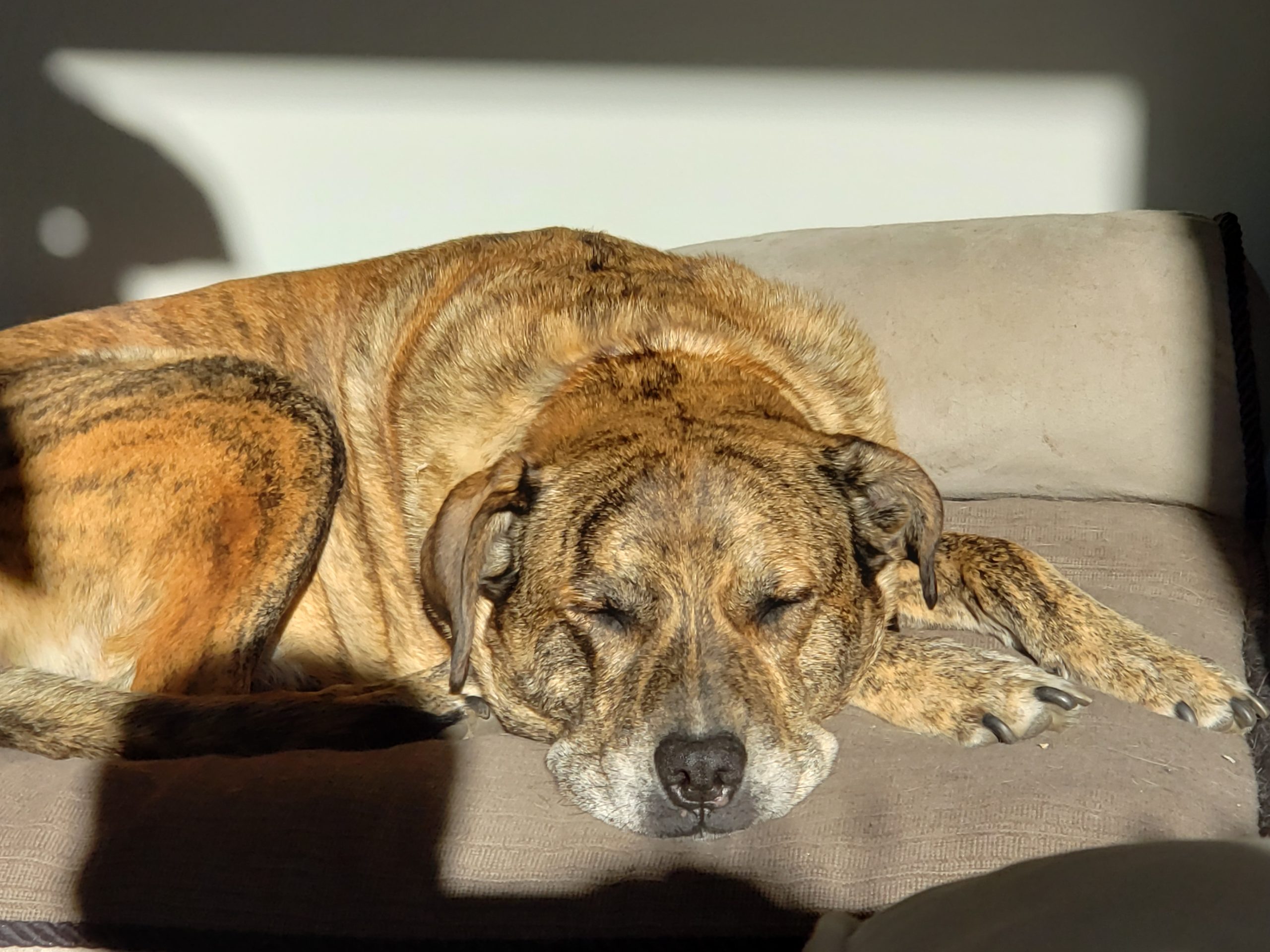I can’t believe we’re already into March! Hopefully last month’s challenge will help you and your dog maintain sanity while we wait for spring to get here. I decided to take it easier on you this month, so the challenge is relatively simple:
Set up a safe space for your pet.

This was inspired by the “security” chapter of our book. Here, security refers to “feeling safe” instead of physically being safe (which we call “safety”). Really, the more accurate wording for this challenge would be “Set up a secure space for your pet”. I digress.
This is a space that your pet can go to when they’re scared or anxious to decompress or just to hang out in, relax, and take a nap. Our goal is that this space is seen as a sort of sanctuary in your pet’s eyes. Some important notes for setting up your pet’s safe space:
- Make it comfy! If you want your pet to choose this space willingly it should be comfortable. Explore different bedding materials, sizes, and shapes.
- Do not bother your pet while they are in this space and especially do not try to coax them out of this space when they’re scared. This is a place for them to relax and regroup by themselves. They’ll come find you when they’re ready.
- Location is important. It should be in a quiet area. If you’re using this space for a dog who is fearful of visitors this safe space should be in an area where visitors will not go.
- If your dog has confinement anxiety you should not use a crate.
Now what?
- If your pet already has a safe space, consider if there are any tweaks that you can make to optimize it. Is everyone leaving them alone when they’re in that location? Do they enjoy hanging out there by themselves?
- If your pet does not have a safe space already, observe where your pet likes to hang out. Some dogs prefer smaller spaces when they’re nervous while others do not. Figure out your pet’s natural inclination.
- Similarly, figure out their natural inclination for what type of comfy things they like to lie on. For example, Oso likes to rest his head higher than the rest of his body (observed by using pillows as they’re intended and resting his head on the couch arms). We take that into consideration when buying him new beds by making sure there’s something for him to rest his head on.
- Put the bedding in the safe space and see if your pet takes to it! If they do, great. If not, place a treat on the bed whenever you’re walking past it. Your pet will be more inclined to hang out in the place that treats magically appear in!
Happy training!
Allie


